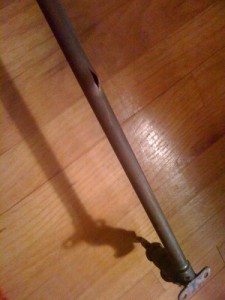
With the recent Polar Vortex sending temperatures plummeting throughout the country, many homeowners are having to deal with frozen pipes. This may not seem like an issue, but frozen pipes are susceptible to bursting. When water freezes inside the pipes, it expands; thus, creating greater pressure. When this pressure reaches a certain point, the pipes will no longer be able to handle it, at which point they burst. Unless you want to deal with a flooded mess inside your home, you should take the necessary action to protect pipe freezing during the winter.
Why Frozen Pipes Are a Problem
According to an article published by Patch.com, a 1/8-inch crack in a pipe can leak up to 250 gallons of water a day, causing flooding, serious structural damage, and the immediate potential for mold. Cracks don’t have to be massively large to cause a fair amount of damage. Even the slightest puncture may end up causing thousands of dollars worth of damage, which is why homeowners should take a proactive approach towards preventing this problem.
Identify Problem Areas
The areas where pipes are most susceptible to freezing include the attic, basement and crawlspace. These ‘problem areas’ are typically poorly insulated, allowing the cold air to have a greater effect on plumbing. If you haven’t done so already, go throughout your home to identify the location of your pipes. Most homes built up north feature plumbing that’s either buries deep underground and/or well insulated to prevent freezing. Down south, however, builders don’t take these extra steps to help reduce the chance of freezing.
Let The Faucets Drip
The single most important step in preventing frozen pipes during the winter is to let your faucets drip at night. You don’t have to turn the faucets on full blast (which is a waste of water), but instead let them drip just slightly. This keeps the water moving throughout your home, which in turn reduces the chance of frozen pipes. Stagnant water freezes faster and more easily than moving water, which is why turning your faucets to a drip helps prevent frozen pipes.
Essential Tips to Effectively Insulate Pipes for Optimal Performance
Pipe insulation is cheap, easy to find, and easy to install, so there’s really no reason why you homeowners should not use it. Placing a layer of insulation around the exposed pipes in your home offers a barrier of protection against the freezing temperatures.